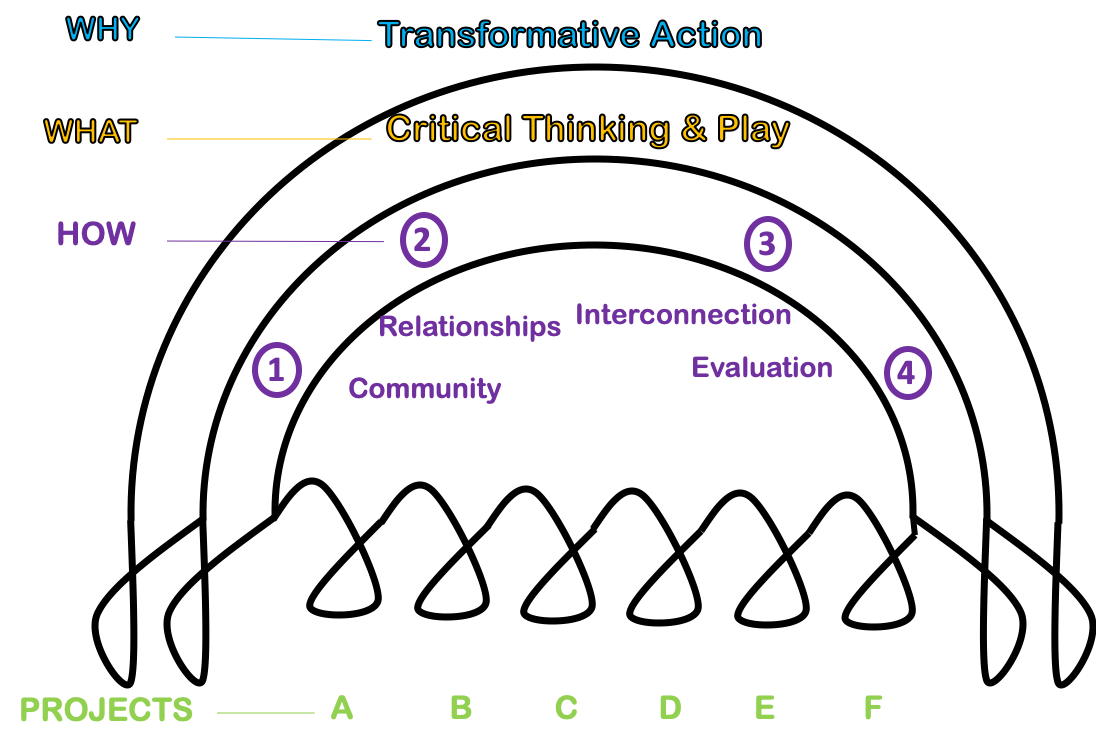We explore all disciplines and view learning as being richest when all subjects are intertwined. Engagement with the sciences is deepened when learners are able to bring in elements of art and social-sciences too; when we can ask complex questions that grapple with diverse perspectives that require us to draw from the strengths of multiple disciplines and sources of knowledge. We are focused on a Design Thinking framework to engage learners (adults and youth alike) in a critical examination of the world around them, building innovative problem-solving skills for the challenges that we can already see, as well as those that are yet to emerge.
McGill Context
McGill is dedicated to creating a welcoming teaching and learning environment for students in all their diversity. Our institutional goals and priorities emphasize diversity, inclusiveness, equity, and access to higher education for all learners. In order to bring this vision to life, students need to see themselves reflected and represented within the McGill environment by feeling connected to their educational experiences. McGill supports opportunities that are empowering and motivating for all learners.
Indigenous Outreach
We recognize that Indigenous communities have ways of teaching, learning, and knowing that can enrich the ways that McGill engages with education and reconciliation in Canada. Listening to and learning from different perspectives, lenses, and approaches will help solve the pressing issues of our time and help prepare learners for the multiple and complex futures that are unfolding.
The Faculty of Engineering is committed to fostering and supporting a welcoming environment for current Indigenous students as well as expanding outreach to Indigenous youth. McGill itself is situated on the traditional territory of the Kanien’kehà:ka, who are a founding nation of the Haudenosaunee Confederacy.
From 2017-2020, the NSERC PromoScience grant has supported an ongoing project between McGill’s Faculty of Engineering and the Kahnawake Survival School, in Kahnawake, Quebec. We emphasize diversity, inclusiveness, and an approach to Indigeneity based on reciprocity, respect and openness throughout this project. There is still much room for growth and continued partnership, hence our commitment to ongoing collaboration with local Indigenous communities. This engagement involves reckoning with the complex histories and oppression of Indigenous peoples and taking seriously how nations and institutions such as McGill can work collaboratively with Indigenous partners towards a fairer, more equitable and more inclusive future.
Philosophy & Vision: Action x Design
 We’ve developed the Action x Design Model (see the diagram on the right) to guide our work, ensuring that we maintain the values and strengths of McGill, and share them cooperatively, effectively, and sustainably with our community. Our model reminds us Why, What, and How we can engage with youth for collective action, with elements that are inseparably woven together.
We’ve developed the Action x Design Model (see the diagram on the right) to guide our work, ensuring that we maintain the values and strengths of McGill, and share them cooperatively, effectively, and sustainably with our community. Our model reminds us Why, What, and How we can engage with youth for collective action, with elements that are inseparably woven together.
Can't see the diagram, read the text version of this diagram.
Why –Transformative Action
Our purpose is to invite young people to participate as full members of community, working together to make positive change locally and globally.
What – Critical Thinking and Play
This means creating real-world environments to engage with, relevant topics to explore, and skill enhancement for the ongoing challenges we face, as well as unknowable challenges of the future.
How – Community, Relationship, Interconnection, Evaluation
Key practices embedded in the work ensure that young people are immersed within, and contribute back to, the people, spaces, and values of their community. We build projects together in the shape of the community, and by continually monitoring our work we have a process for improvement and adaptation.